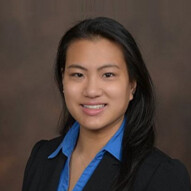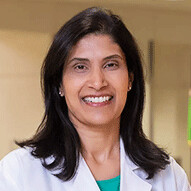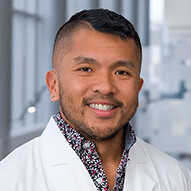Pediatric and adolescent breast pathology
In pediatric patients, breast masses are relatively rare and – if they do occur – most are benign. The most common breast abnormality seen in children younger than 12 is a unilateral breast growth where one breast grows faster than the other. In these cases, while one breast develops earlier than the other, most often they ultimately become symmetrical.
What is pediatric and adolescent breast pathology?
Breast pathology is an abnormal area of development or an abnormal growth in the breast. In rare cases, breast abnormalities can occur from birth. Athelia (absence of nipples) and amastia (absence of breast tissue) may occur on one side or in both breasts.
An extra breast (polymastia) or extra nipple (polythelia) occurs in about 1 percent of the population, and are slightly more common in males than in females. This extra tissue may cause discomfort during menstrual cycles and may need to be removed.
In pre-pubertal children, other breast infections and conditions may include:
Newborn breast enlargement - This is caused by an influx of maternal hormones through the placenta – this disappears over time.
Infection - Infection of the breast tissue in newborns is called mastitis neonatorum. This can often be treated with antibiotics.
Breast abscesses - Commonly caused by the bacteria Staphylococcus aureus, this manifests as a tender, reddish mass and can be treated with antibiotics and/or drainage of the infection.
Benign early breast development (premature thelarche) - This is isolated breast development in young girls aged 6 months to 9 years. This may be of no concern, but may be a sign of early puberty.
Precocious puberty - This is more common in girls and is often idiopathic but may be a sign of an underlying condition
Adolescent girls may present with the following breast conditions:
Breast asymmetry - unilateral breast growth where one breast grows faster than the other
Breast abscesses (especially in lactating adolescents) - commonly caused by the bacteria staphylococcus aureus, this manifests as a tender, reddish mass and can be treated with antibiotics and/or drainage of the infection
Fibroadenomas - common, benign masses that are smooth, mobile, and round and may enlarge just before menstruation
Cystosarcoma phyllodes - less common, painless breast masses that can be quite large and need to be removed. Most are benign, but some are cancerous
Breast hamartomas - rare, painless masses similar to fibroadenomas that can come back if not completely removed
Palpable mass from trauma - caused by breakdown of fat tissue
Fibrocystic changes - Discrete breast cysts or diffuse small lumps that are very common in the adolescent population. They can cause tenderness and heaviness during menstruation.
Mammary duct ectasia - A benign lesion that consists of swelling of the mammary ducts. This can cause nipple discharge that may be bloody.
Malignant breast disease is very rare in children and in adolescents. Risk factors for breast malignancies include:
Family history of breast cancer
Previous breast disease
History of other cancers
Radiation delivered to the neck and chest areas
What are the signs and symptoms of pediatric and adolescent breast pathology?
If your child is experiencing any of the following breast symptoms, you should bring her in for examination by a doctor:
Breast enlargement in a pre-adolescent child
Swelling or redness of the breast tissue
Breast pain or tenderness not associated with menstruation
Nipple discharge
A palpable mass, or masses
A mass that appears after trauma to the breast
Noticeably asymmetric breast development
Significant breast pain with menstruation
How is pediatric and adolescent breast pathology diagnosed?
If your daughter has a breast mass, the doctor will talk to you about the situation, and questions asked may include:
Family history of breast or ovarian malignancies
Family history of BRCA1 or BRCA2 mutations
If your child has had cancer
Previous radiation treatments of your child’s chest
History of trauma
History of other breast masses
The doctor will then perform a complete examination of both breasts to evaluate for masses and nipple discharge.
Because breast tissue in young children is very dense, mammography is not usually very helpful for diagnosis. If your doctor cannot immediately diagnose the condition with physical examination, they may order an ultrasound test.
In young and pre-adolescent children, doctors avoid biopsy unless completely necessary, as it can harm the developing breast.
If your child is showing signs of early breast development, her doctor will examine her for other signs of puberty such as pubic hair. If your daughter’s doctor suspects precocious puberty, they may order blood hormone tests and an x-ray of the wrist (called a bone age test).
Your doctor may want to monitor benign masses every few months to ensure they don’t enlarge, cause pain, or develop atypical changes.
How is pediatric and adolescent breast pathology treated?
Amastia in girls can be treated with augmentation mammoplasty by a plastic surgeon.
Mastitis neonatorum, infections of newborn breast tissue, can usually be treated with antibiotics.
If your pre-adolescent daughter has an abscess, her doctor will first treat her with antibiotics. In some cases, abscesses require surgical drainage.
Adolescent abscesses can be treated with antibiotics and/or ultrasound-guided drainage.
If your daughter is experiencing precocious puberty, her doctor may prescribe hormone-blocking medications delivered through injections or implants.
Some cystosarcoma phyllodes or hamartomas will require surgery if they are large or potentially malignant.
For fibrocystic changes, your daughter’s doctor will advise her to avoid caffeine and may suggest evening primrose oil to alleviate breast pain. Her doctor may want to perform a biopsy if one dominant lump is present for several months
Mammary duct ectasia usually resolves by itself; therefore, surgery is not recommended if the diagnosis is certain.
If your daughter is diagnosed with a cancerous mass in the breast, her doctor will treat her with surgery and chemotherapy.
Pediatric and adolescent breast pathology doctors and providers
 Paulette Abbas, MDPediatric Surgeon
Paulette Abbas, MDPediatric Surgeon M. Brett Cooper, MDAdolescent Medicine Specialist
M. Brett Cooper, MDAdolescent Medicine Specialist Nirupama De Silva, MDPediatric Gynecologist
Nirupama De Silva, MDPediatric Gynecologist Michele Gifford, MDPediatric and Adolescent Gynecology
Michele Gifford, MDPediatric and Adolescent Gynecology Jason Jarin, MDPediatric Gynecologist
Jason Jarin, MDPediatric Gynecologist Erik Su, MDPediatrician
Erik Su, MDPediatrician